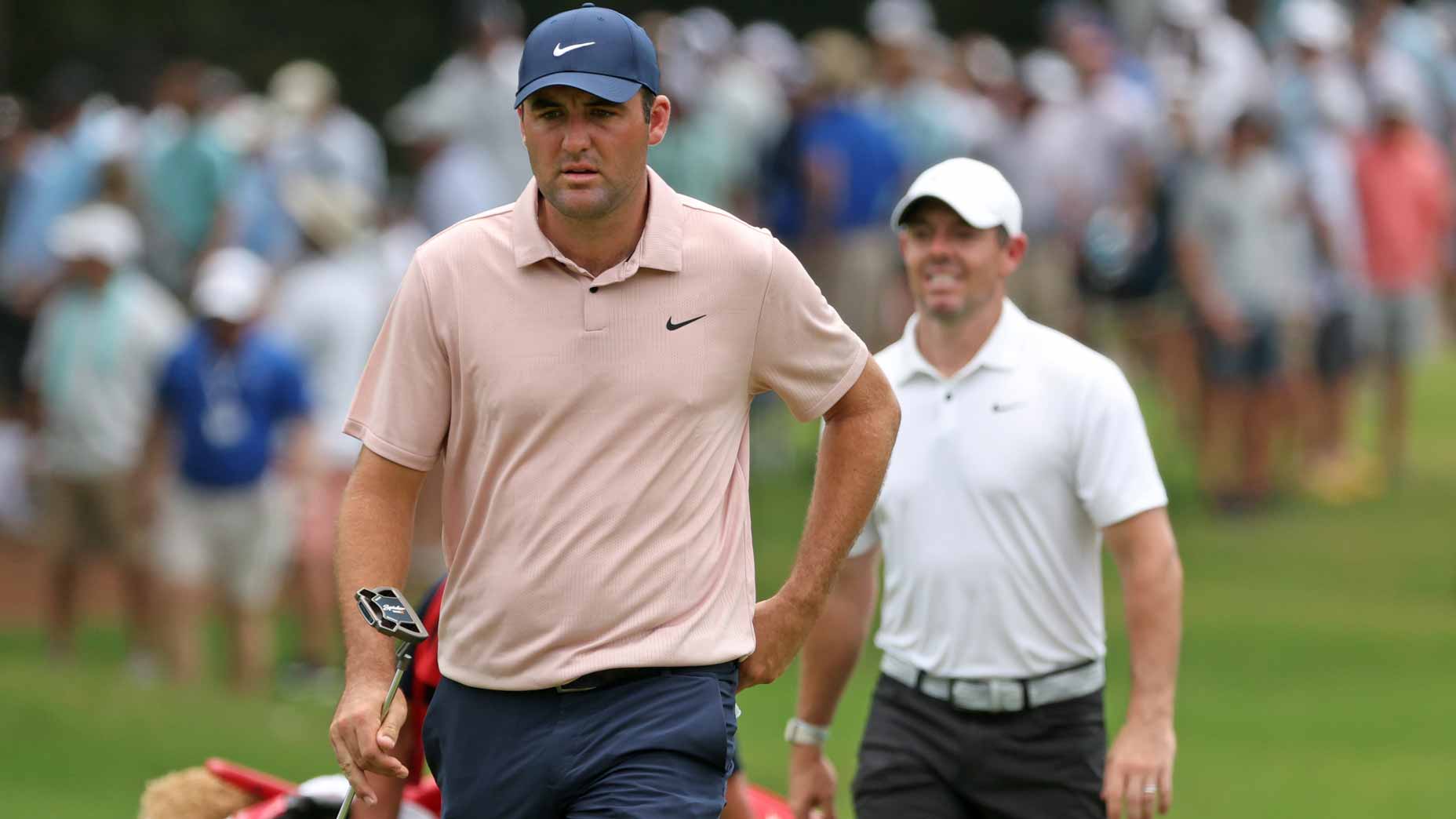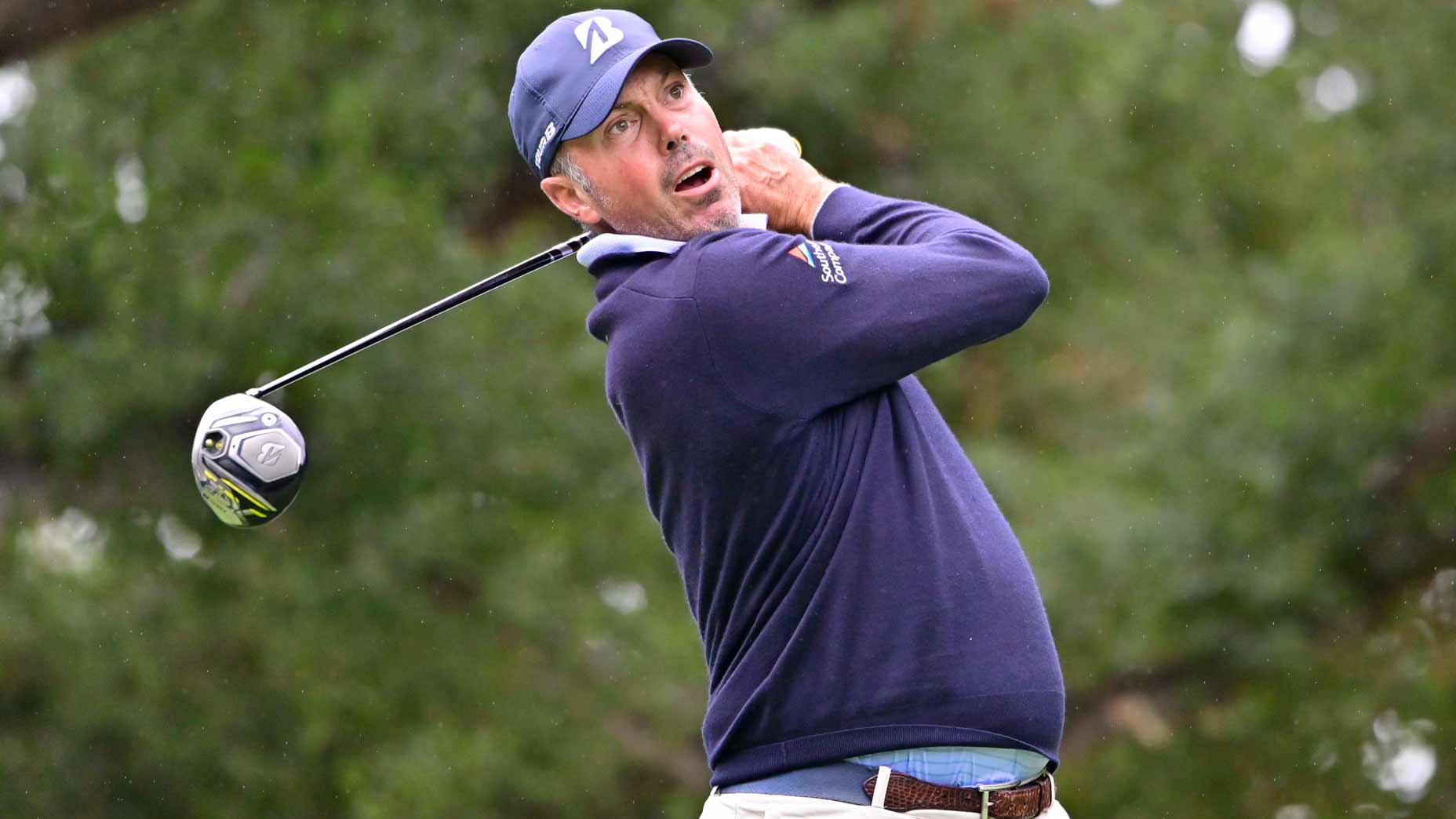LIV execs say PGA Tour merger ‘turbocharged’ business, expansion plans

Two LIV executives pushed back against questions about the league's future in the wake of the PGA Tour merger.
Getty Images
BEDMINSTER, N.J. — Maybe the woodchipper really is coming for LIV Golf — but we can say confidently it never passed the Secret Service checkpoint at Trump Bedminster.
The environment that greeted fans in New Jersey two weeks ago was not of a league counting down its final days, as has been widely speculated. To even the most discerning eye, the vibe from golf’s upstarts was … ecstatic.
LIV has spent most of its existence clinging to the underdog role, but the energy among the staff on-site was borderline exuberant — a kind of excitement that seemed to suggest they knew something about the embattled league’s future the rest of the golf world did not.
Here, for the record, is what the golf world does know: LIV’s financiers, the Saudi Public Investment Fund (or PIF), entered an agreement in June to unite their commercial businesses with the PGA Tour under a new, for-profit company. That company, tentatively named PGA Tour Enterprises, will be governed by a board controlled by the PGA Tour. PGA Tour commissioner Jay Monahan is expected to become the CEO of PGA Tour Enterprises, a role that will grant him the authority to make strategic decisions with the new company’s assets. One of those assets is LIV Golf, a league Monahan has spent the better portion of the last 18 months railing against, and that stands in direct conflict with the PGA Tour.
For these reasons — along with documents produced by a U.S. Senate inquiry that showed merger discussions centered around Greg Norman’s removal as LIV commissioner — it has been widely speculated that one of Monahan’s first moves will be to shutter or severely alter LIV, kneecapping the upstarts and moving forward with a new, unified vision of professional golf under the PGA Tour.
But as of now, that’s only speculation, and LIV doesn’t seem terribly worried about speculation while Monahan and PIF chief Yasir Al-Rumayyan hammer out the specifics of a “definitive agreement.” After conversations with close to a dozen league staffers, executives and players at Bedminster and beyond, the message was unanimous: the merger didn’t kill LIV; if anything, it strengthened it.
“The day the announcement came out, my phone was flooded with calls,” said Monica Fee, LIV’s head of global partnerships. “Our conversations with prospective partners have been reinvigorated because of the idea of coexistence, finally, in the marketplace.”
One of the surest signs of that belief came in late July just up the road in New York City, where LIV hosted an “upfront” presentation for advertisers at a banquet room in the Lower East Side’s Public Hotel. The league spent a pretty penny hosting “more than 100” clients from blue-chip companies across corporate America, where hors d’oeuvres and cocktails were served alongside presentations showcasing the league’s early commercial and broadcast successes. But when the festivities got underway, LIV’s executives realized they had a problem: they hadn’t realized so many guests would show.
“My only regret is that the room was a little too small,” Fee said over Zoom last week with a sheepish grin. “We were bringing them together for the first time, and it was a packed room.”
Once things got underway, LIV welcomed a cast of league-wide all-stars (including Norman, Bryson DeChambeau, and David Feherty) to preview its vision for the league’s next two seasons — 2024, in which the league’s future remains secure under the framework agreement, and 2025, in which it does not. That was hardly accidental. One of the primary goals of the presentations, Fee said, was to convey a “sense of security” to potential partners that LIV remained ready for business into the future.
“It’s business as usual at LIV golf,” Fee said. “Things are very, very busy. My team is meeting with numerous brands every day who are interested in partnership possibilities with the league or with the teams.”
IT SHOULD BE NOTED that for all LIV’s struggles over these first 18 months, the league’s ability to pump its own tires remains unparalleled. Early promises have proved difficult for LIV to fulfill, in terms of attracting high-level sponsors (LIV, to date, has no Fortune 500 advertisers), big-time audiences (LIV stopped releasing viewership data after steady declines to start the season) and, at times, high-quality tournament golf.
In short, it’s one thing to say you’re open for business, and it’s another thing to mean it. But as it turns out, that’s where some of the league’s current posturing grows even more intriguing. One key component of the July presentation were updates from LIV’s media team on the league’s pursuit of a Friday U.S. broadcast partner (its coverage is currently only aired on the CW on Saturday and Sunday). The league is about to launch a full round of negotiations for those rights, in addition to rights negotiations in “multiple” international territories, and is planning a series of additional meetings similar to July’s “upfronts” in the coming months, starting with the Sportel sports media conference in Monaco in October.
In a strange twist, LIV’s TV negotiations could prove telling about the state of affairs between the PIF and PGA Tour. If the league only wrangles a non-traditional network partner to sign on through 2024 for its Friday coverage, it could signal the league is headed toward a radical shift under the new world order (particularly considering the league’s CW deal also expires at the end of the ’24 season). But if LIV finds a major U.S. network partner through 2025 or beyond, it could signal the negotiations about the future of golf between the PIF and PGA Tour are more fluid than previously thought.
LIV wouldn’t say which networks have been engaged thus far in the U.S. or abroad, but early indications are the path to finding another U.S. partner could be easier the second time around.
“What’s been interesting in the past few weeks is a reinvigorated sense of interest from the TV world,” Will Staeger, LIV’s chief media officer, told GOLF.com. “We’ve set up conversations with all major networks around the world.”
Staeger says he’d like to think the reason for the newfound intrigue has to do with the growth shown from LIV’s self-produced (and technologically dazzling) production, but he admits there’s another, more logical reason networks are suddenly answering his calls.
“When the framework agreement announcement happened…” he said, his voice trailing off for a beat. “…It opened some doors.”
BUT PERHAPS THE MOST important doors for LIV are the ones that haven’t closed yet. Like in Bedminster, where the PIF’s checkbooks remained pried wide-open.
The buildout in Bedminster was considerably larger than a year earlier, a point raised excitedly by at least four LIV employees. Highlights of the new layout were a two-thirds-filled suite-level tent behind the 16th green named “The Birdie Shack” and a revamped “fan village” experience next to the clubhouse featuring, for the first time, a dunk tank. LIV does not release attendance figures, but the crowd at Bedminster was respectable by the league’s relatively sparse standards, and seemed larger than the year before, according to a handful of firsthand accounts.
In the cozy merchandise tent — roughly the size one would find at one of the PGA Tour’s non-Signature Events — staffers battled both frenzied shoppers and quickly emptying shelves. Some branded team apparel has been difficult to keep in stock, they said, and though it was only Thursday, there was already concern many of the hot sellers — including a “58” branded t-shirt celebrating Bryson DeChambeau’s brilliant final round in West Virginia the previous week — wouldn’t last till Sunday.
These are positive developments, yes, but it remains to be seen whether they’re positive enough to sustain the league’s viability in the long run. This much is particularly obvious from up close, where house music and alcohol sales are about the only things that fulfill the league’s promise of Golf, But Louder. I asked Staeger in a quiet moment if he worried at all the merger might mean the end for LIV. He paused again.
“I’m not sure where that take is coming from,” he said. “You will not hear that from anyone at LIV or from our investor. We’re excited about the future.”
IT IS BACK TO BUSINESS at PGA Tour headquarters, where Monahan will head up the Tour’s negotiations with Al-Rumayyan to determine the future of professional golf, LIV included. A “definitive agreement” is due by Dec. 31 at latest, and in a press availability at the Tour Championship on Tuesday, Monahan indicated he was “confident” such an agreement would be reached.
As for whether that agreement will mean the end of LIV Golf, Monahan bristled.
“As it relates to elements of what is in the framework agreement and elements of what we’re talking about, I’m not going to talk publicly about them until we’ve completed those discussions and I can answer that question specifically and directly,” he said, apparently unaware that his lack of specificity or direction was an answer all itself.
There will be time to parse LIV’s future — and rest assured they will — but LIV’s present reveals plenty. As Bedminster bled into the rearview, Staeger could hardly hide his grin.
“I would say it’s not business as usual,” he said. “It’s turbocharged business as usual.”











